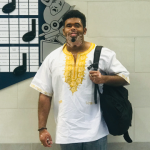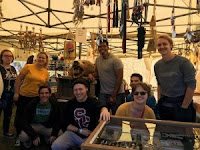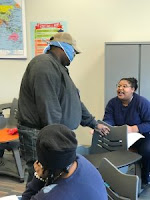It’s no big secret that you as a professor you are most likely passionate about the subject that you teach. That’s why you dedicated countless amounts of hours and money to your content area. However, despite how passionate you may be about your topic area, your students may not share your same enthusiasm.
Allow me to introduce myself. My name is Marcus Lucas, II, and I teach Spanish. Although the need for being bilingual continues to grow in our nation, the desires of people to make that change have not grown. Each year I am presented with students rolling their eyes, attitudes, and trying to convince me why my course was irrelevant to their lives. I quickly learned that if students were going to learn my language then I must first speak theirs.My first step in speaking their language was to change the name of my course from a Spanish course to a money course. Throughout the year, I showed my students how to use what they were learning to increase their income. I noticed that the opportunity for distraction continued to grow with each new and trending modification to cell phones. It was then that I decided that if I could not beat them, then I could join them.
Like it or not, the language spoken by the current generation is that of entertainment. That is when everything changed for me. My job was to educate and their goal was to be entertained and that is when edutainment entered my classroom. So what is edutainment? Edutainment is when one leverages entertainment to achieve academic goals. Edutainment is not all fun and games. Edutainment operates under the principals of touch it, taste it, see it, hear it, experience it. It was when I began to make sure that I hit each of these goals that I saw an increase in performance in my classroom. Why?
Taste
Who does not like food? Attendance on food days is always highest. Participation is never a problem. Teaching the culture or lesson plan surrounding the dishes becomes extremely easy. Students WANT to take what they have learned and apply it at home. Furthermore, I was once informed by another teacher that when you have students with financial issues, not only are you educating them, you are also serving another purpose. Hunger is no longer an issue; at least for that day.
Touch
I like to bring cultural items into the classroom and allow them to pass them around. Or, I like to teach students to create their own. This allows students to physically connect with a verbal subject area.
See
I enjoy using videos or full immersion (field trips). The students are able to hear and see other people OUTSIDE of class using what they have been taught. Many times students return saying “Lucas! It’s true! It’s really true!”
Hear
I love finding music and allowing students to listen to it and hear what I have been teaching in the lyrics or subject of the song. As children, we used music to learn; the alphabet, days of the week, body parts, clean up, etc. It is funny that most of us can’t remember our high school lesson plans but can recall our kindergarten lesson plans because they were set to music. As a result, it is not uncommon for me to use music to teach a lesson plan. Cardi B and her beats have helped MANY students than she will ever know.
Experience
Sometimes I recreate scenarios. Other times I may plan or assign field trips. I like to use games and skits in class as well because after hearing it several times, the student begins to learn through repetition. When playing games, I will often deduct points if I see a cell phone being used to make calls, texts or otherwise. Most students will discipline each other because they do not wish to lose points.
The video below provides even more pictures of edutainment in action. I hope this inspires you!





